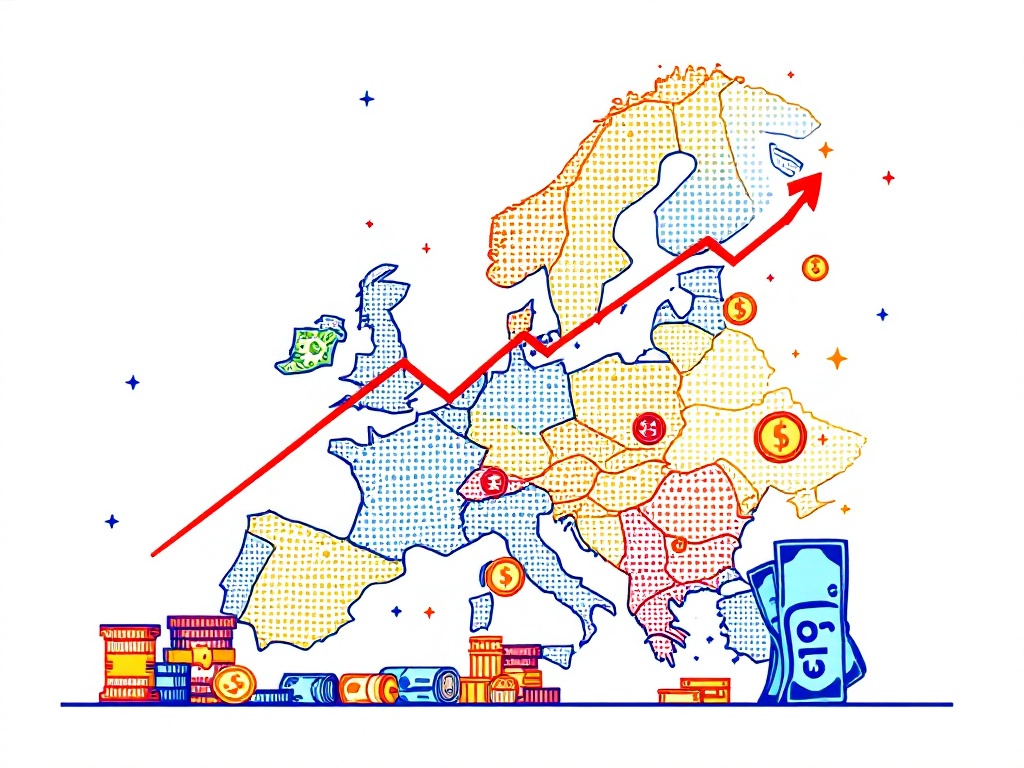Euro Area Inflation Slightly Decreases to 2.2% in March 2025

Eurozone, Wednesday, 16 April 2025.
Inflation in the Euro area decreased marginally to 2.2% in March from 2.3% in February, influenced by declining energy prices. This slight shift may impact upcoming European Central Bank policy decisions.
Influence of Energy Prices on Inflation
A significant factor behind the slight decrease in the Euro area inflation rate in March 2025 has been the decline in energy prices. This decline followed a modest increase of 0.2% in the previous month and was accompanied by a continued fall of 1% in March as energy made a negative contribution of -0.10 percentage points to the overall inflation rate [1].
Sector-specific Inflation Trends
While overall inflation waned, the inflation rate for food, alcohol, and tobacco rose slightly from 2.7% to 2.9%. Services inflation saw a decrease from 3.7% to 3.5%, and non-energy industrial goods recorded a steady inflation rate of 0.6% [2]. These contrasting trends within different inflation subsets highlight the complex dynamics at play within the Eurozone economy.
Variations Among Euro Area Economies
Inflation trends varied across Euro area countries, with Germany experiencing a drop from 2.6% to 2.3%, whereas inflation in Italy accelerated from 1.7% to 2.1%. In contrast, France’s inflation rate remained steady at 0.9%. Such divergences can imply heterogeneous economic conditions and may necessitate nuanced policy responses from the European Central Bank (ECB) [3].
Potential Policy Implications
The slight decrease in inflation to 2.2% may influence ECB’s monetary policy. Although the ECB could consider maintaining current policy to accommodate varying national inflation dynamics, the slight easing of core inflation to 2.4%, its lowest since October 2021, might also encourage further moderate adjustments to support economic stability [4].